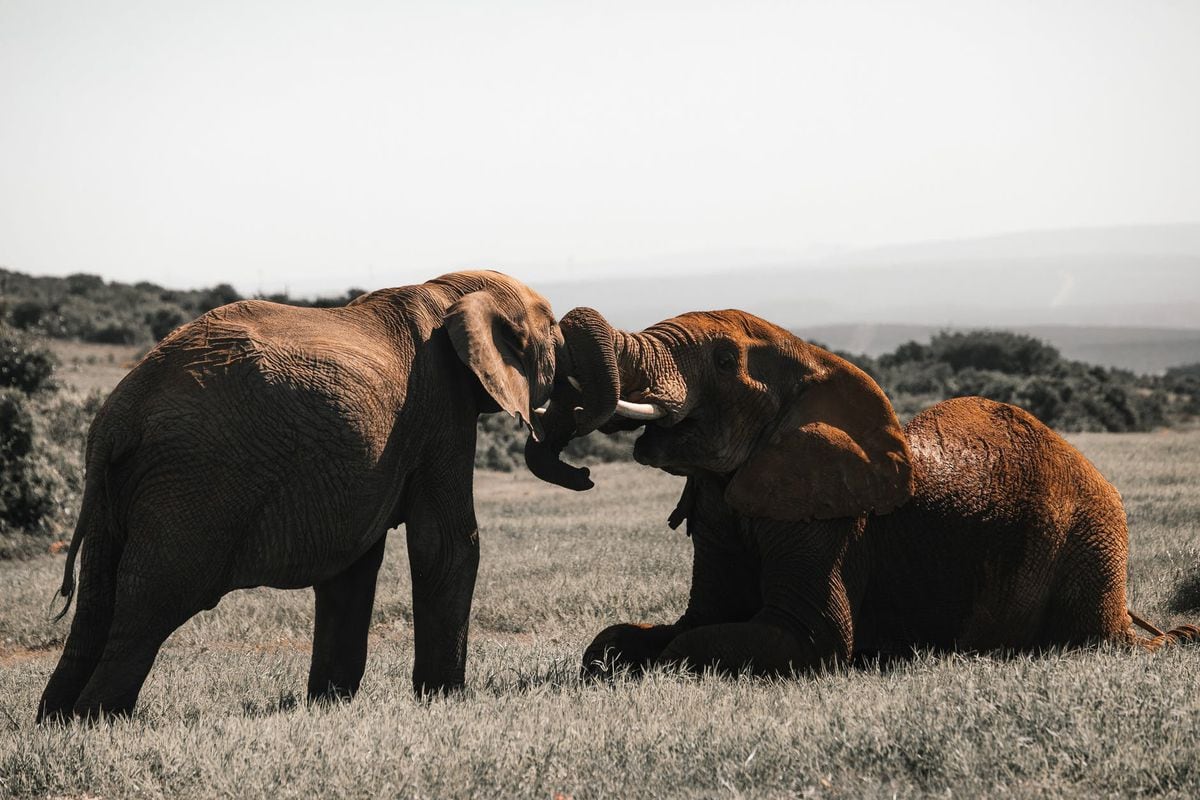Recently, an academic book entitled
The Oxford Handbook of Moral Psychology
has been published , in which philosophers and psychologists reflect on contemporary moral psychology.
Of the 50 chapters that the book contains, one is dedicated to the rest of the animals.
Specifically, it addresses the question of whether morality is an exclusively human characteristic, or whether we can also find it in other species.
This is a controversial topic on which philosophers have not yet reached a consensus.
The authors of the chapter, Susana Monsó and Kristin Andrews, specialized in animal ethics and philosophy, are committed to approaching the debate from a scientific perspective that analyzes the existing evidence on animal behavior.
Monsó and Andrews address a question that they consider key: do the rest of the animals care about the others?
That is, are they able to identify and meet the needs of other individuals?
Are they affected by your misfortune?
Empathy, compassion, pain and love are necessary emotions in every moral being.
In order to answer these questions, ethologists have been looking for three different behaviors: mourning, consolation, and helping.
Nowadays, there is enough scientific evidence to affirm that certain species show some of these behaviors or even all three.
For starters, grief over the death of a mate has been described in elephants, primates, dogs, cetaceans, giraffes, and peccaries.
Among all, possibly, the elephants are the ones that show the most moving behavior.
Save the Elephants
organization
studies the behavior of elephants in the Samburu National Reserve.
They have individually identified all the elephants in the area and, since 1998, have recorded their movements by GPS.
On October 11, 2003, members of this organization observed the death of Eleanor, the matriarch of one of the groups, documenting the behavior and movements of all the elephants in the area.
For example, they narrate how another elephant named Maui doubtfully approached Eleanor's body, sniffed her with her trunk and touched her.
She then placed her right paw on her corpse and wiggled it for a few minutes.
In total, five families visited the matriarch's body, including her own.
The funny thing is that most of these families were not related to Eleanor, in fact, it is possible that Maui did not know her because she came from another area.
Elephants take an interest in other dead or sick individuals, regardless of their genetic relationship.
Explaining this behavior from an evolutionary point of view is quite a challenge, especially if we take into account the diseases that can be contracted when inspecting a corpse.
According to the authors of the study, this shows that elephants and humans share emotions such as compassion, as well as an interest in death.
Regarding consolation behavior, it has been documented in primates, elephants, cetaceans, rodents and crows, but the case that touches us most closely is that of dogs.
Whether by having experienced it in person or by having seen it in a video, almost all of us know stories in which a dog comforts a human.
But this is not just anecdotes, scientific studies confirm that these pets are able to identify human emotions and respond accordingly.
For example, one study compared the reaction of dogs to a crying human and another that was simply humming, showing that they spent significantly more time touching and licking the crying human.
Another study wanted to see if dogs also comfort each other.
They conducted the experiment with 16 dogs, which we will call subject dogs.
They were placed individually in a room and played different vocalizations through a loudspeaker.
Sometimes it was the cry of a familiar dog, others of an unknown dog and others of an artificial sound that acted as control and was similar to these cries.
The familiar dog then entered the room and the reaction of the subject dog was studied.
When they had heard the cry of the familiar dog, they were much more affectionate with the newcomer than when they had heard an unknown dog or the artificial sound.
So, thanks to this evidence and many others, scientists can conclude that dogs are empathetic beings who comfort their friends.
The last behavior that indicates whether an individual cares about another is helping.
As in the previous cases, it has been observed in different species of primates, in dogs, in elephants, in rodents and even in pigeons.
In popular stories, an animal that is often shown off for its heroism is the dolphin.
We tend to portray them as friends and confidants, capable of risking their lives to save bathers from sharks and guide lost ships.
What the scientific evidence says so far is that, at least, they do help other dolphins.
In 2012, Korean scientists were conducting a census of small cetaceans in the East Sea.
Suddenly, they realized that there was something strange in a group of common dolphins (
Delphinus capensis
), as they were swimming close together near the surface.
They counted a total of twelve dolphins, among which one of them stood out more than the rest and balanced on the body of the others.
Sadly, the dolphin was sick and did not survive despite the best efforts of his friends.
Mothers had been observed several times before pushing their calves to the surface to help them breathe, but this was the first time scientists had observed this among adult dolphins.
In addition to describing in detail what happened in an article, the witnesses of the event recorded it on a video that is accessible to everyone.
So the conclusion is clear: There are animals that care about others.
As to whether this makes them moral beings, we can continue the debate.
Above all, a philosopher seeks to ask good questions.
Perhaps that is why Monsó and Andrews conclude the chapter like this:
“As long as we are willing to consider ourselves moral, we think it is necessary to ask: Can animals also be moral?”
Laura Camón
is a biologist, primatologist and science communicator.
You can follow
MATERIA
on
,
and
, or sign up here to receive
our weekly newsletter
.






